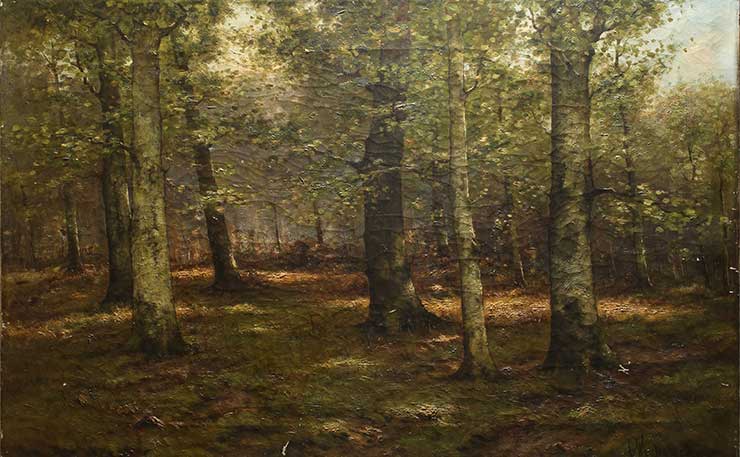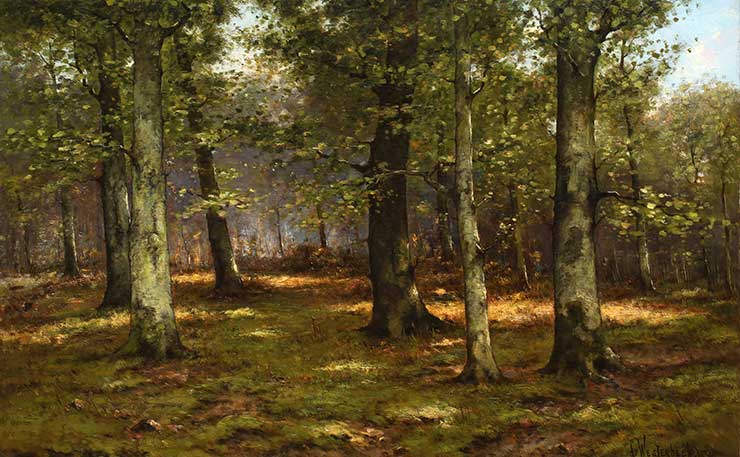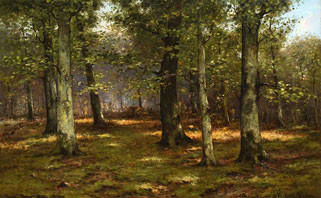MENU

Goethe's Colour Wheel 1810

caring for your art
It is strongly recommended that you periodically examine your collection to ensure early detection of possible problems. Using a flashlight can be very helpful. From the edge of the painting, direct a beam of “raking” light across the surface to highlight irregularities or defects. While examining your painting, also consider the following questions:
IS THE CANVAS…
• warped, torn or punctured?
• showing “dimples” or dents from objects that have pushed against it?
• buckling at the corners or very loose and slack?
• dry and brittle?
• showing cracks or pinholes when held up to the light?
• torn at the tacking edge?
• showing stretcher marks from the front?
• showing water stains or mold on the front or back?
IS THE stretcher…
• warped or split?
• are the stretcher keys loose or missing? (most stretchers have 2 keys in each corner used to tighten the canvas)
• is the painting attached to the frame by nailing directly through the stretcher?
• does the stretcher show an infestation of woodworm? do you see fresh sawdust and wormholes?
• are stretcher keys, tacks or other objects wedged between the canvas and the stretcher? (this can be felt from the front by very lightly running fingers along the bottom edge of the painting or by using raking light to reveal protrusions)
IS THE panel…
• warped, split or twisted?
• showing signs of fresh woodworm infestation? do you see holes in the wood or sawdust of a lighter color than the panel itself?
• showing signs of mold or dry rot?
• does the panel structure seem to change with varying levels of humidity?
IS THE GESSO, OR PRIMER, AND PAINT LAYER…
• flaking? check this with raking light. hold a flashlight so the light beam shines parallel to the surface of the painting, this is most effective in a dimly lit room.
• cupping, do you see pronounced raised edges?
• missing?
• blanched or faded?
• dirty or discolored?
IS THE PAINT SURFACE…
• scratched?
• cloudy or opaque?
• showing areas of old retouch that does not match the original paint?
• discolored with soot or a yellowish, brown color?
• splattered with house wall paint?
• covered with insect excretion?
IS THE FRAME…
• structurally sound or splitting at the joints?
• warped?
• showing signs of woodworm or mold?
• flaking or losing pieces of molding?
• strong enough to hold the painting?
• hardware secure or loose and ready to fall out?
HANDLING
Here are some tips on the handling of paintings:
• Do not hold a painting with your fingers tucked into the stretcher, pressing against the canvas. Similarly, never lift the painting by the stretcher bar.
• Do not lift or carry a painting from the hanging wire.
• Framing hardware should be attached to the frame, not the stretcher, of the painting.
• Framing hardware should be attached with screws and not nails.
• Never touch the surface of an unvarnished painting or the gilding of a frame with dirty hands. It is safest to wear cotton gloves.
• Plan the route before handling the painting to ensure a safe, padded place to land. Be sure the padding is thick enough to accommodate ornate frames.
• Never hold frames by moldings or carvings. Lift from the back outer edges and from underneath.
• Check that the painting is secure in the frame.
• Contemporary or unframed paintings may present additional challenges in handling that require a conservator’s attention.
Hanging
• Hang paintings from picture hooks, not plain nails. Hooks should be securely placed in the wall. Take extra care when hanging art in an antique house with old plaster walls.
• Heavy paintings require two or more hooks and may need reinforcement to the wall itself.
• Avoid hanging a painting over a fireplace.
• Avoid hanging a painting directly over air conditioning ducts.
• Avoid hanging a painting in direct sunlight.
• Avoid cold outer walls where there may be a danger of condensation. This is especially true for people who leave their homes unoccupied in the winter for weeks or months at a time.
• Avoid damp places such as kitchens and bathrooms.
• Hang above the level where furniture can be pushed into the painting.
• When lighting paintings, avoid lights that attach to the top of the frame and hang over the picture. Often, these lights illuminate and heat the painting unevenly. This type of fixture can also fall into the artwork resulting in burns or tears.
• Indirect sunlight, recessed lighting or ceiling-mounted spotlights are generally best for home installations.
STORAGE
• The environment in which a painting is stored is just as important as where it is hung. Temperature and humidity extremes should be avoided. Basements and attics are generally unsuitable places to store art.
• While the average gallery and homeowner do not have a climate controlled environment, it is still important to avoid humidity fluctuations as much as possible. Relative humidity in the air affects the moisture content in a painting. This, in turn, directly affects the expansion and contraction of the canvas. The more the canvas moves, the more unstable the delicate paint and ground layers become, resulting in cracking, cupping, flaking and eventually, loss of paint.
• It is generally acceptable to keep a painting on canvas between 40%-70% relative humidity (RH). Paintings on a wood panel are more vulnerable requiring 50%- 60% RH. It is important to keep this in mind when considering where you store your art.
• Often, a clean, dry closet is a safe choice for the homeowner rather than the basement or attic. When stored, paintings should always be protected with a stiff board (cardboard or Fome-Cor) between each work of art.
• When handling and storing paintings, take great care to ensure framing hardware and wire will not touch the surface of an adjacent picture.
• Keep stacks of paintings to a minimum size, placing a weight on the ground in front of the stack to prevent it from slipping. Use pads to protect the base and corners of paintings and to separate paintings. Put the largest painting at the back. With the aid of a rigid board between each work of art, always ensure that there is never anything protruding into the painting itself.
• Consider having a picture rack built if there are many paintings in storage. Vertical racks are frequently a good choice for framed and unframed paintings alike.


WOODED LANDSCAPE
Painted by Cornelis Westerbeek, Jr.
This oil painting of a wooded scene by Cornelis Westerbeek, Jr. was discolored and considerably unstable with flaking paint and ground layers throughout. The image was unremarkable, flat and dull.
After a delicate cleaning and thorough reconsolidation, as well as a lining to a new support, this landscape now invites the viewer into a beautiful scene of dappled sunlight and spring foliage.



